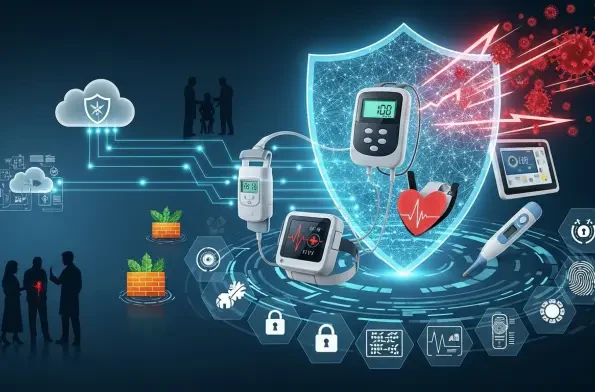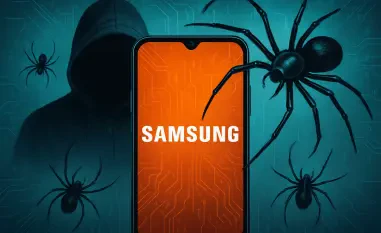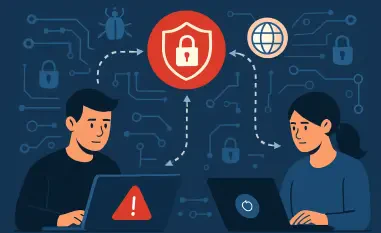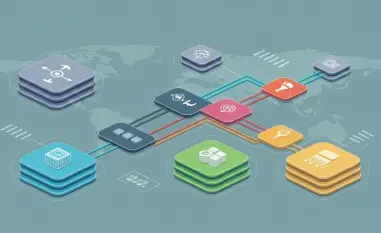Imagine a hospital where life-saving devices like infusion pumps and MRI machines, connected to the internet for real-time data sharing, suddenly become entry points for malicious hackers, posing a severe threat to patient safety. This scenario is not a distant threat but a stark reality in 2025, with over 1.2 million healthcare IoT devices exposed to cyberattacks worldwide. These connected tools, pivotal in enhancing patient care and operational efficiency, are now at the heart of a growing security crisis. This review delves into the state of healthcare IoT technology, examining its transformative potential alongside the vulnerabilities that jeopardize patient safety and data integrity. The focus is on understanding the current landscape, analyzing performance gaps, and exploring pathways to secure this vital sector of digital health.
The Rise of Healthcare IoT in Modern Medicine
Healthcare IoT encompasses a vast array of connected devices, from patient monitors to wearable health trackers, all integrated into medical systems to streamline care delivery. These technologies enable telemedicine, remote diagnostics, and real-time monitoring, fundamentally reshaping how healthcare providers operate. The rapid adoption of such tools has been driven by the need for efficiency in hospitals and the growing demand for personalized patient experiences, positioning IoT as a cornerstone of digital health innovation.
However, the proliferation of these devices has outpaced the development of adequate safeguards. Many systems store highly sensitive information, such as medical scans and personal records, making them prime targets for cyber threats. The sheer scale of deployment—spanning global healthcare networks—amplifies the stakes, as a single breach can ripple through entire systems, affecting millions of patients and providers alike.
Core Features and Vulnerabilities of Healthcare IoT
Weak Security Protocols Undermining Device Integrity
A significant flaw in healthcare IoT lies in the lack of robust security measures embedded within these devices. Many operate on outdated software, rely on default passwords like ‘admin,’ and use unencrypted protocols such as DICOM for medical imaging. These shortcomings leave critical data, including X-rays and patient histories, vulnerable to unauthorized access, often through simple exploits that attackers can execute with minimal effort.
This absence of stringent protocols is not just a technical oversight but a systemic issue. Devices designed for functionality over security often lack the capacity for timely updates or patches, creating persistent weak points in hospital networks. The result is an environment where cybercriminals can easily infiltrate systems, exposing healthcare providers to risks of data theft and operational disruption.
Global Scale of Device Exposure
The scope of vulnerability in healthcare IoT is staggering, with over 1.2 million devices exposed online across the globe. The United States accounts for more than 500,000 of these, followed by regions like South Africa and Australia, highlighting a problem that transcends geographic boundaries. Both advanced and emerging healthcare systems face similar threats, as the reliance on connected devices is now universal.
This widespread exposure underscores a critical performance gap in IoT technology. Devices intended to enhance patient outcomes are instead becoming liabilities, with open ports and unsecured connections acting as gateways for attackers. The global nature of this issue demands a coordinated response, as no single region can address the challenge in isolation.
Emerging Threats and Real-World Impact
The threat landscape for healthcare IoT is evolving rapidly, with cyberattacks becoming more sophisticated and damaging. Recent breaches have demonstrated how hackers exploit vulnerabilities to access vast troves of data, manipulate device settings, and even cause life-threatening errors, such as altering dosages in infusion pumps. These incidents reveal a technology struggling to keep pace with the ingenuity of malicious actors.
Beyond technical exploits, the human and financial toll is immense. Cases like a major breach affecting 5.6 million patients highlight the potential for identity theft, medical fraud, and eroded trust in healthcare systems. Social media platforms amplify these concerns, with discussions often focusing on systemic failures and the urgent need for better protections in an increasingly connected medical landscape.
The real-world implications extend to diverse sectors, including hospitals and telemedicine providers. Exposed devices jeopardize not only data but also patient safety, as compromised wearables or monitors can delay critical interventions. This intersection of technology and human lives places healthcare IoT under intense scrutiny, demanding immediate improvements to its security architecture.
Challenges in Securing Healthcare IoT Systems
One of the most pressing barriers to securing healthcare IoT is the prevalence of legacy systems that cannot support modern security upgrades. Many devices, designed decades ago, lack compatibility with current cloud-based solutions or firmware updates, leaving them perpetually exposed to known risks. This technical limitation hampers efforts to fortify networks against evolving threats.
Cultural attitudes within the healthcare sector further complicate the issue. The emphasis on connectivity and efficiency often overshadows security considerations, with many providers viewing IoT primarily as a tool for operational gains. This mindset delays the adoption of necessary protocols, perpetuating a cycle of vulnerability despite the availability of advanced security solutions.
Regulatory inconsistencies also play a role in hindering progress. While some regions impose strict penalties for data breaches, others lack enforceable guidelines, creating uneven accountability. For instance, disparities between European standards and those in other areas result in varied levels of preparedness, making global standardization a distant goal for healthcare IoT security.
Future Prospects and Technological Innovations
Looking ahead, the trajectory of healthcare IoT security shows promise through anticipated advancements. Stricter certification mandates for devices are expected to emerge by 2026, ensuring that new technologies meet rigorous safety standards before deployment. Additionally, the adoption of zero-trust architectures could redefine how trust is established within medical networks, minimizing unauthorized access.
Emerging technologies offer further hope for bolstering defenses. AI-driven anomaly detection systems are being developed to identify and respond to threats in real time, while multi-layered security approaches provide comprehensive protection across device ecosystems. These innovations, if widely implemented, could significantly enhance the resilience of healthcare IoT against cyber risks.
The long-term impact of improved security extends beyond technology to patient trust and healthcare delivery. As systems become more secure, confidence in digital health solutions is likely to grow, fostering greater adoption of IoT tools. This shift could transform the global medical landscape, aligning technological progress with the fundamental goal of safeguarding patient well-being.
Final Reflections on Healthcare IoT Security
Reflecting on this review, the examination of healthcare IoT security revealed a technology with immense potential marred by significant flaws. The analysis uncovered critical vulnerabilities, from outdated protocols to widespread device exposure, that have placed millions at risk. Real-world breaches and evolving threats further exposed the gaps in performance, painting a sobering picture of a sector in crisis.
Moving forward, actionable steps emerged as essential to address these challenges. Prioritizing the integration of modern security frameworks, even in legacy systems, stood out as a necessary measure. Collaboration between healthcare providers, regulators, and cybersecurity experts was identified as a key driver for establishing universal standards. Ultimately, investing in innovative defenses like AI and zero-trust models offered a pathway to not only mitigate current risks but also build a more secure foundation for the future of digital health.













